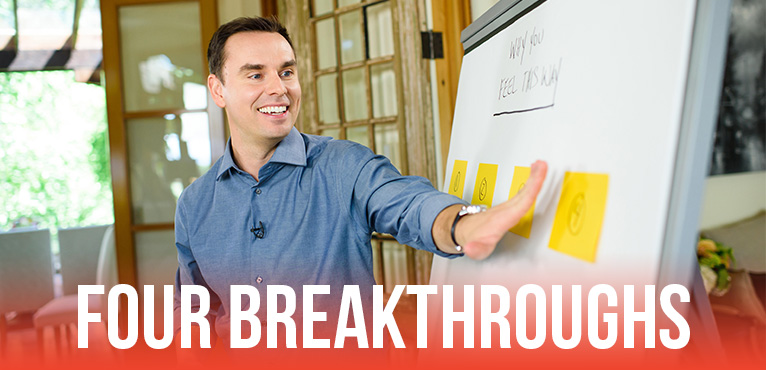SUMMARY
- “These are motivation triggers ’cause if you’re not triggering yourself, the world is doing it for you. And if the world is doing it, you know what the world’s going to trigger you towards? Angst, outrage, distraction, consumption. It’s not going to trigger you towards you being your best self.”
- In this training, learn how to develop an action mindset so you can consistently take action, stop procrastination, and stay disciplined towards your goals!
- “Some of the biggest breakthroughs in our life is when we just stop doing the things that we know aren’t right for us.”
- How do you develop the habit of taking action and staying disciplined long term? Try these 6 tips to help you maintain your momentum!
- Watch the video to get the full training.
- Already have the High Performance Planner and CRUSHING each and every day? Let’s celebrate you! Take a photo with your planner and use #HPXlife or #TeamHPX.
HOT NEWS & DEALS!
-
Free Trial for Reignite Your Life course!
Enjoy a free trial for my Reignite Your Life course where I help you break the pattern of negative thinking and bad habits so you can deeply reconnect with your purpose! Click here to gain access.
-
High Performance Planner!
This is the 2-in-1 planner and journal achievers use to win the day and accelerate long-term success. Get yours here (while supplies last)!
DID YOU KNOW?
I give weekly prizes, gratitude and shout-outs to our students, so post a screenshot or video on Instagram and use #TheBrendonShow! I can’t wait to hear your thoughts about this episode!
RELATED POSTS
How to Master Motivation
How to Regain Lost Motivation
Unfocused? Find Your Why
How to Visualize Your Dream into Reality
10 Work From Home Productivity Tips
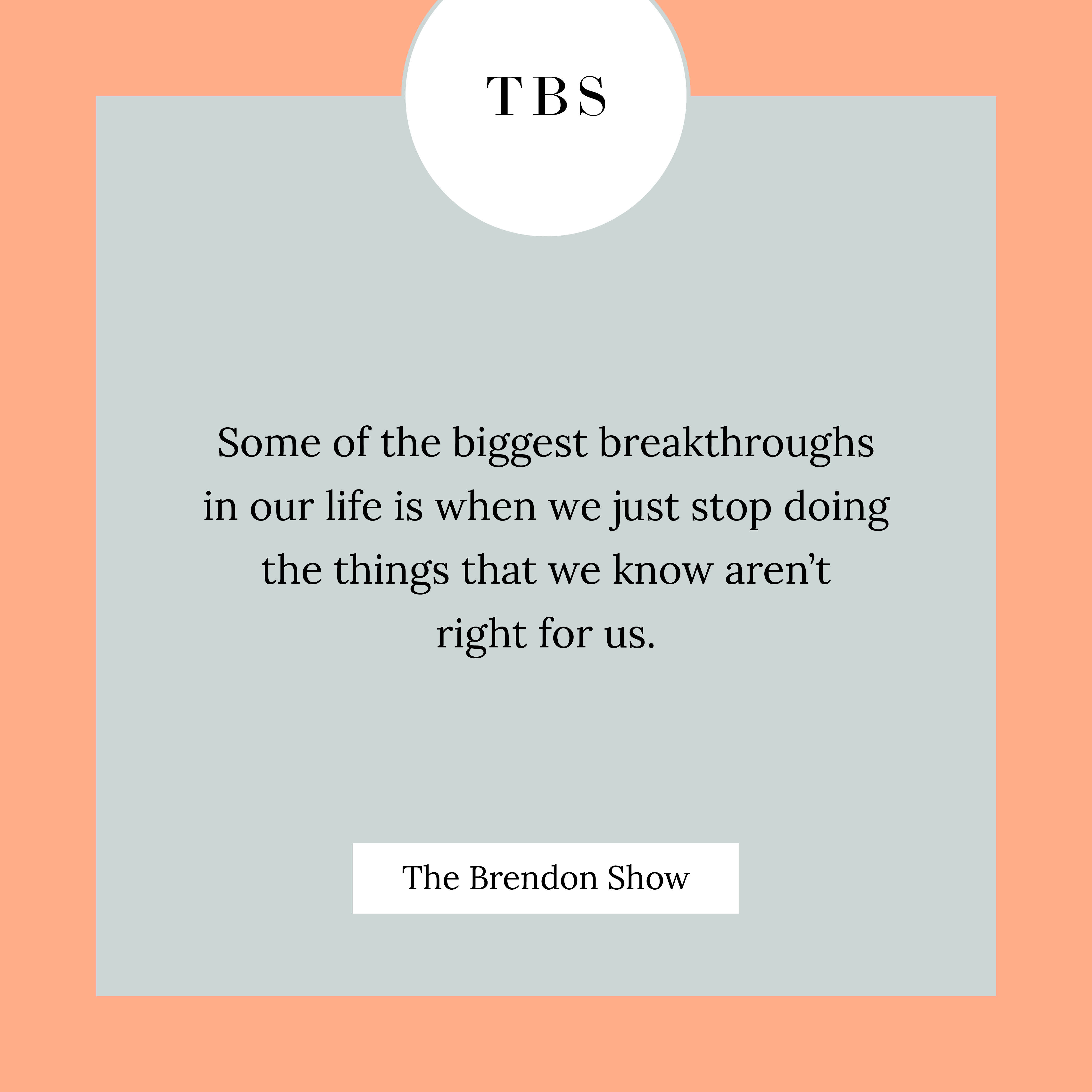
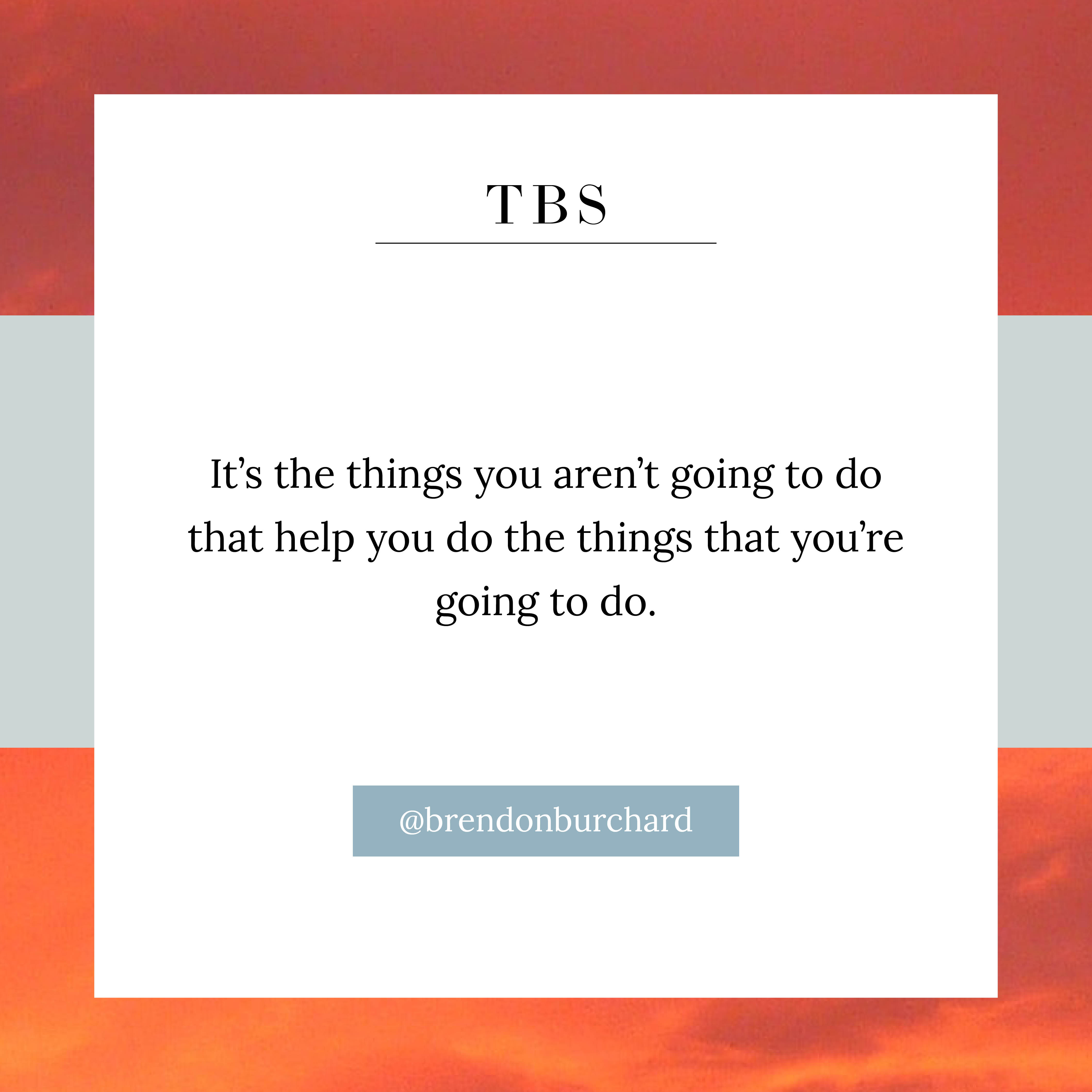
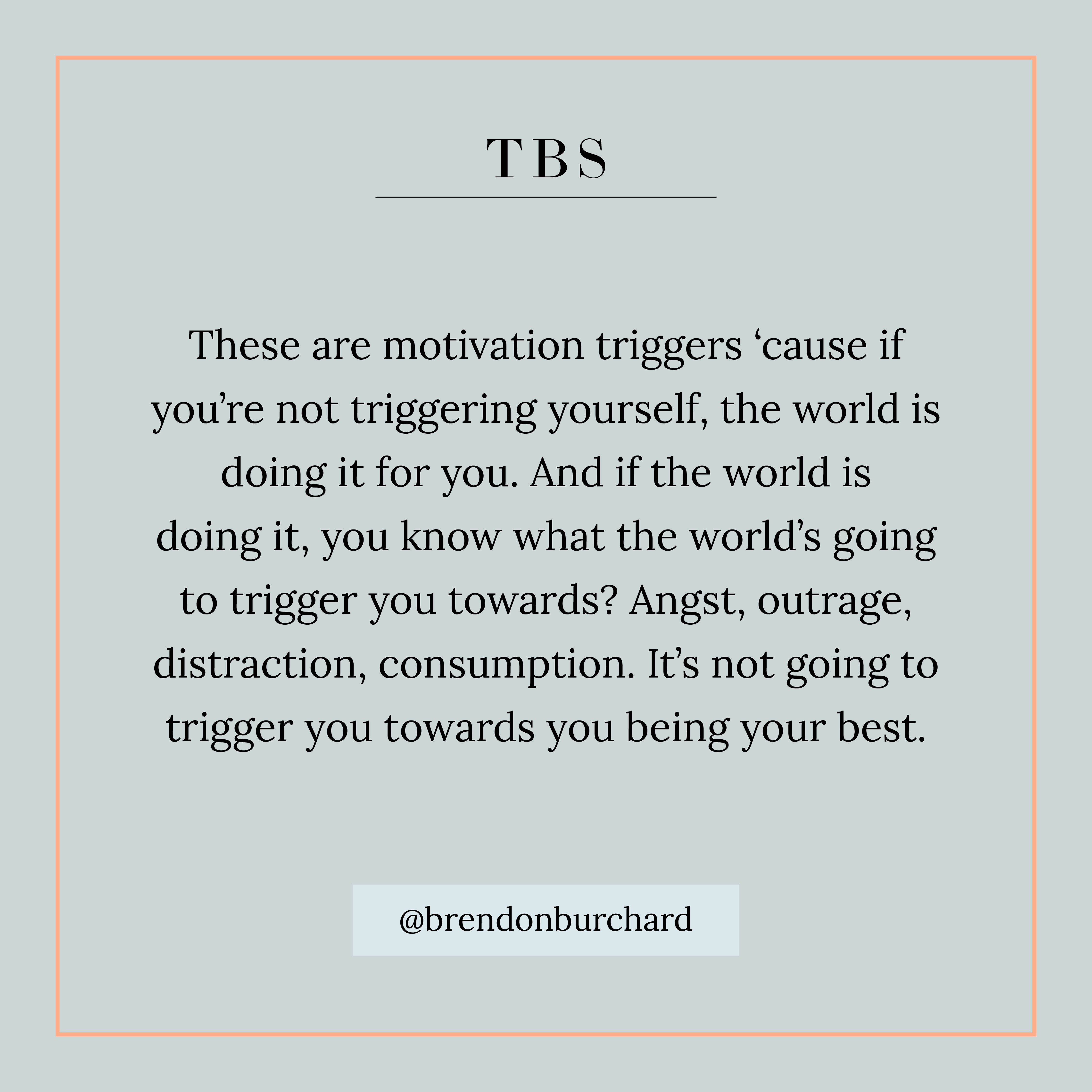
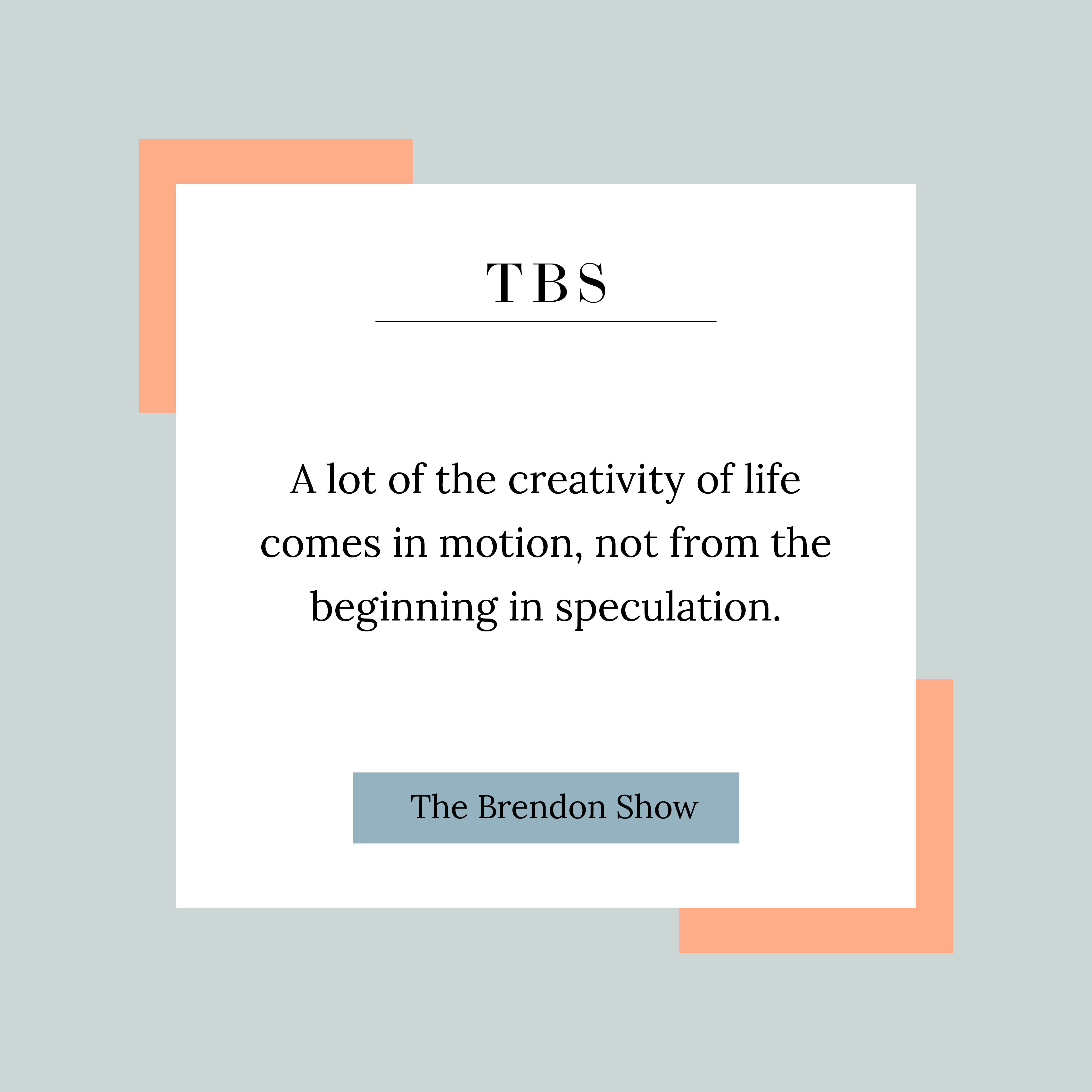
FULL TRANSCRIPT
[The following is the full transcript of this episode of The Brendon Show. Please note that this episode, like all TBS episodes, features Brendon speaking extemporaneously–he is unscripted and unedited. Filmed in one take, The Brendon Show has become one of the most viewed unscripted, direct-to-camera self-help series in the history of YouTube. It has also been the #1 Podcast in all of iTunes and is regularly in the top podcasts in Self-Help and Health categories around the globe. Subscribe to the free motivational podcast on iTunes or Stitcher.)
High performance training action mindset. This is important. How do you develop the action mindset? How do you actually get the action mindset and then make it a discipline? Here it is. First thing. So remember you got a big new idea for the year. You’re really super stoked. You can’t wait to do it.
1. 30-Minute Daily Block Time
First thing, you have to adopt your 30-minute daily block. People tell me all the time, “But I got this dream or this goal.” I’m like, “Great.” What 30-minute period of day are you going to work on it today? Well, you said you have a big goal, right? Show me, when’s the 30-minute block? That thing gets today. It’s a new idea, you say, right? Okay, where is it? Is it 1:30 to 2:00? Is it 4:00 to 4:30? Is he going to check it at five, right after work till 5:30, then get on the commute a little later? Like, when? New ideas must have new blocks of time, write it down.
New ideas must have new blocks of time.
If you’ve got a new idea that someday—a “big dream”—and it doesn’t land in the calendar, of course you’re not going to get momentum. If you won’t give it something, 30 minutes a day, it doesn’t matter to you. Just be honest, like any good parent will tell you this. If you don’t spend 30 minutes with your kids a day, I mean, good luck in having that connection. Good luck in forging that future. Good luck in helping that person feel loved and supported.
I mean, if something is important to you, you give it time. So if this idea is important to you, immediate mindset, this is what I immediately do, 30 minutes. And if it’s a completely new idea, it’s got to get at least 30 minutes if I want it to actually come true. And it’s important from the time I set the idea, the next day it gets 30 minutes. Big new idea, must do it. If it’s important to me the next day, it gets 30 minutes. Not four years from now. Right now, I’m in the partnership I’m working on. It completely came into my life. Totally interrupted my life. I don’t have any time, but it’s important. I found 30 more minutes a day, right? 30 more minutes is easy to find for everybody. People don’t think they can, but it’s possible.
I just had a friend and I got in a huge argument over lunch about this. Not everybody can find 30 minutes. And I’m like, “Who can’t find 30 minutes more a day?” Like show me who, with a little more discipline, a little more planning and preparation, who can’t find 30 more minutes a day? “Well, I’m busy, and I have all these things and you don’t understand them.” Okay, walk me through your day. “Well, I have to get everything and get the kids ready for work. I have to get in the car, I have a commute. That commute is an hour every single day. I can’t take away that, I got to do this and this and this.”
And I’m like, “Well, what if you didn’t drive?”
“What do you mean?”
“Well, what if you didn’t drive the car so that your focus and intention could be doing something else?”
“Well, I got to do the commute.”
I don’t know, I’ve noticed that a lot of cars have a passenger seat and some of them even have a back seat. And if you sit in one of those, you don’t have to do this. And I just got you an hour a day.
So many people, they believe so deeply that they are managing their time so great. I’m like “No,” most people have so much free time. They have no idea that they are distracted and unprepared or addicted to consuming that they’re losing little, little pieces. And especially here in the United States, you guys have heard me rail on this. The average American—four hours of television a day. Don’t tell me you don’t have 30 minutes a day. I don’t know anyone who can’t find 30 more minutes a day for a great new idea that can change your life. You got a new idea, it can change your life. Find your 30 minutes every single day.
2. First Output Rule
Number two, remember the first output rule. First output rule says: I’ve got a big new dream, big new goal, big new idea. Don’t think that you have to do what we’ve all been taught, which is begin with the end in mind, because sometimes you don’t know what the end in mind is, but you know the first step. So what I tell people is, “I’ve got a big, new idea. What’s the first output that you would have to create on that immediately? What’s the first output that would start you on the path? I don’t know. Okay, figure that out.”
First step, first output. First step is not the research, that’s the first output. Let me give an example. When I began my career, I said, “One day, I’m going to do video courses.” And in mind I’m going to do all my online courses. That was the big idea. “I Brendon Burchard am going to do online courses.” Guess what I didn’t do? I didn’t say, “Well, I better figure out the whole curriculum for all the courses for the rest of my life.” Begin with the end in mind, didn’t do that. I said, “What’s the first step that would allow me to start doing that?” Okay, first step, get in front of the camera, teach, and post it on the internet. That’s the first output. One teaching video on the internet.
So I went and I got my stupid little, at the time flip video cameras, and you guys know about those. I got the flip video camera, I duct taped it to a box. I put on my cleanest shirt at the time and I stared at the camera and I taught. And I pulled off the flip video camera and I spent four hours uploading it on the internet. You remember that? Probably not. But you remember that? Upload, upload, upload, upload, and then it wouldn’t play, ’cause it wouldn’t stream fast enough. But I spent the time, the first output to me building an online course empire, one video.
What’s your first output—do that now. That’s how you maintain momentum. The reason people don’t stick to their habits is because they’re waiting to create the output someday. I’m like, “What’s the first output, do it.” That’s the thing to work on right now. When you have that 30-minute daily block, work towards that first output.
Because if you get the first output, you get real momentum.
You get the first output, your dream, your idea is realized, it’s tangible. It’s like, “Ooh, I did that thing.” Your body likes it, your brain goes, “Ooh, I like that. Good job, let’s go again.”
First output. If you don’t know the first output of what you have to create, you don’t even have a dream. You don’t even have a fully thought out idea.
First output, make it, do it, create it, post it, do the thing, that’s it. “I want to write a book Brendon, but I don’t know what the whole book is.”
I’m like, “Great, first output, first page, write it.”
“What do you mean, I don’t know what the book is.”
Write the first page.
“But I don’t know what the book is.”
Write the first page—first output would be the first page of the book, right? Write the first page.
“But I don’t know what the five chapters are.”
Write the first page. See, you don’t have to know the whole picture. First step, do the first output. ‘Cause you get that first page done, you probably get the next page done and probably get the next page done and you’ll start getting clarity of the project.
A lot of the creativity of life comes in motion, not from the beginning in speculation.
Wow, that’s good, right? We should write that one down. Almost rhymed.
3. 90-Day Challenge
Okay, next up number C, 90-day challenge. I can’t believe how many people have a big dream or big goal and they don’t set up their own 90-day challenge. What’s your first output? Good job, appreciate you, but you got 30 minutes every single day in 90 days. Where are we? 90 days, three months, let’s go. ‘Cause see, what most people are—they’re scared to commit to the big idea and dream. And I go, “Oh, don’t commit to the first big idea or dream.” Not for life, just like you won’t ruin your life forever. Don’t commit to your new idea or dream forever. I need 90 days. Give me 90 days. Commit to that thing 90 days and get at it for 90 days. Reevaluate it for the 90 days where you’re at.
Most people don’t take action because they think, “Well, I’ll have to do this action forever.” Just like they worry, “I’ll be ruined forever.”
There’s no forever. There just isn’t. It’s just now. None of us are guaranteed anything. So if what we have is right this moment and we’re looking at the future, we’re working towards that good job.
In 90 days, where are you? That’s it—what’d you do in 90 days? Did you lose 5 pounds? Great. You don’t have to say, “I’m going to be completely life transformed, I’m going to have six pack abs and still drink piña colada on the beach with 40 people in bikinis.”
No, no, no, no, no. Lose five pounds. You’ve got 90 days. Go. Just set the 90-day challenge for yourself and get at that. And then worry about the next series of goals after that. So you’ve got a big idea or a dream and you’re really committed to it. Commit to a 90-day challenge. And what does that mean for you specifically? What’s going to happen at the end of 90 days? How you think, how you feel, how you move, what we will achieve, what outputs are created? Get really clear on those types of things. You’ll be so happy you did. Without these things, there is no idea into action. There is no momentum. It’s why you didn’t stick to your habit. ‘Cause you didn’t give it 30 minutes a day. You didn’t stick to your habit, ’cause you didn’t even know what you were supposed to do. You didn’t stick to your habit because you didn’t at least set a time period that was realistic for yourself, that was doable.
I know so many people who have set a New Year’s resolution and never say, “Well, what happens at the end of March 31st?” January 1, 90 days out, great. Where am I on March 31st? They don’t even think about that. And so they struggle. They got big ideas and dreams and no action plan over a 90-day period.
4. Have a “Drop List”
Okay, D, you got to have your drop list. There is no new idea in your life without a drop list of things to stop doing. A drop list: I’m dropping these things. I am not doing these things, I’m saying “no” to these things. I’m getting this off the agenda. I’m letting that responsibility go.
It’s the things you aren’t going to do that help you do the things that you’re going to do.
So you have to spring clean a little bit. If you have new dreams in your life, spring clean. What are you going to stop doing? I’m very, very, very disciplined about this. For me personally, I have one of my own personal practices on the first of every month. I make my drop list every month. Not once a year, every month. I go, “Okay, this month, what do I need to drop?” Because inevitably I’m moving so fast. I pick up new things, I’m doing all the time, right? Some new idea, new dream, new thought, ’cause I’m trying to innovate. I’m trying to be up front, I’m trying to lead them. I’m trying to change things.
And then what ends up happening is, throughout the month, other people also do what? Other people give you responsibilities. Give you ideas, give you programs. They are adding onto your plate. All month long, you’re collecting a bigger and bigger plate. I think it’s really important that every single month we’re dropping activities that we picked up along the way, right? I have some new idea, I’m going to do that. I have to let it go. Even some goals, right?
Some months I start, I go, “Okay, well this month I’m into these five new things.” And at the end of that month, I realized, I’m not going to even maintain five. I’m going to drop two of them, I’ll stick with three, but I can’t do all five. That’s a drop list. Without a drop list, I have no idea how you can keep adding new things, makes sense.
Some of the biggest breakthroughs in our life is when we just stopped doing the things that we know aren’t right for us.
5. Friday Friend Status Call
Next up, big important one. The Friday friend status call. Everything that we know from goal setting comes back to sociology. If you don’t have someone you’re doing something with actively. If you don’t have an accountability partner, you don’t have a coach. You don’t have a friend you go to lunch with or someone you talk it through. Then the odds of that happening for you are so low because we’re social beings. We need processing time with other people. And the more processing time we have, usually the more progress we get, right? It’s why therapy is so powerful in unlocking people or coaching is so powerful in unlocking people.
It’s like, “Oh, I’m processing, oh, I’m getting distinction, I’m getting more progress.” You need that Friday friend status call. If you have a big new goal or dream, all I want you to do—every Friday at the end of the day, literally 5-minute, 10-minute, 15, 30-minute call, or whatever it is. Pick it up, call your friend and say, “I did this week, struggled with this, this worked, that went well.”
Now you go, “How did you do?” You got one person in your life, every week, you’re talking about momentum with. I don’t care if it’s your mom. I prefer this is a human, so not the cat, but a human that, every single week, you talk through things with, like, “Where are you?” Oh, I don’t care if it’s the librarian. I don’t care if it’s your social worker. I don’t care if it’s your brother. I don’t care who it is, it could be the stranger across the street. Don’t talk to strangers if you’re a PG-13, but everybody else, have that conversation. And just on a Friday go,” Hey man, this is where I’m at.”
Because if you won’t do that, I promise if you don’t socialize your learning, you will not achieve your dreams.
You must socialize, what am I learning? Where am I at? How’s it going? What am I struggling with? You have to ask for help, but you need a consistent basis. Big dreams require weekly check-ins. Write it down.
Big dreams require weekly check-ins.
So who’s going to be your weekly check-in, accountability coach, friend, mentor who? Every week check in. And if you’re like, “Well, I don’t know anybody, everybody hates me.” You know what, go on your Facebook page every Friday at five and go, “This is what I learned this week. This is what I tried. What did you guys try?” And all the people who make fun of you, delete them and everybody else says, “Good for you.” So easy, life’s very simple.
6. Create Motivation Triggers
Next, create motivation triggers. When I walked in this door today, it’s the same that I walk in the doors of my conference rooms at, where I’m doing my seminars, I usually use my doorway trigger, meaning that’s what a motivation trigger is. A trigger is something physical or tangible that happens and you attach either a statement or an action to it. Trigger is something tangible that you say or do when something else happens.
So when I walk through a door and that’s every door of my life, I walk through a door, my mind almost always says—’cause I’ve just conditioned it over and over and over doing this—I walked through the door. My mind says, “I am a happy man entering this space, ready to serve.” I’m a happy man entering the space, ready to serve. It’s been since I was 20 years old. One, ’cause I was wondering to myself, “I’m happy. I have so much be grateful for.” So do you. So how are you reminding yourself that you’re grateful that you’re happy, that you’re good? And then I remind myself, I’m entering this space ready to serve. Not hoping to serve, not maybe one day I’ll deserve to serve, I’m ready right now.
Whatever I know, I believe in my ability to figure things out, I’m ready to serve, now. I don’t need permission, I don’t need more money. I don’t need more team, I’m ready to. Whatever I got, I’m ready. Let’s go.
I don’t need new things, more things, better things, tons of things. I’m ready to serve right now, let’s go. I’m not ever waiting to provide service to the world, ever. You don’t have to have the big stuff, the fancy stuff, just go. I didn’t have big fancy cameras and lights and fancy big flip charts when I started this. It was me in a really dirty shirt with the thing, the buttons too hung up like this, it was so nasty and gnarly and bad, it was awesome. And I was ready to serve. You don’t have to have everything.
I was watching this documentary recently on my main man, Usain bolt, one of the greatest—well, he is the greatest sprinter of all time. And you see the scene of him and he’s doing sprints in a field, with like this sort of crappy little belt tied around his waist, tied to a chain tied to—we would call it a weight sled, but you could barely call it that. A little metal sled where you put on weights, like a 45-pound weight from it, like lifting. So he would sprint with this crappy little thing. When you go to the NFL, I work with my major teams, they usually have the fancy sleds. It’s these longer sleds that glide when you take off that released a proportionate amount of tension, along with the weight as you speed up. Very fancy contraptions.
Now, this dude, the best ever is down in Jamaica, in a hot crappy field with this huge belt on with one coach—not 12 coaches, one coach—standing there next to him, he ties this thing. And when he takes off, this thing is bouncing along behind him. He’s the world’s best. ‘Cause he’s not waiting to have everything to train, he’s training.
I’m not waiting to have everything to serve, I’m serving.
“Well, one day when I have a following, I’ll post stuff.”
“Now one day when I’m ready, I’ll put myself—”
No, there is no one day to be ready. You’re ready, now go. It is a mindset you must have. You are ready to go. So that’s one of my triggers. Walk through a door. I’m entering the space as a happy man, ready to serve, let’s go. And that’s just one trigger. I have all sorts of other triggers. I have different doorway triggers. When I walk in my house, I say something a little different to myself than when I walk in my office. But other triggers I have, when a door closes in the car, every time a door closes in the car, I say something else to myself. When I walk into my office, I take a first action that triggers momentum for me.
You need to have first actions or space triggers that help you stay at your best. They’re ultimately all geared towards one thing. How can you remind yourself to be at your best?
And how do you use physical objects, time periods, and situations to get yourself there? That’s the question, that’s your job.
These are motivation triggers ’cause if you’re not triggering yourself, the world is doing it for you. And if the world is doing it, you know what the world’s going to trigger you towards? Angst, outrage, distraction, consumption. It’s not going to trigger you towards you being your best self.
So if you didn’t maintain your habits this year, go on my YouTube channel and type in: the power of habits. You’ll see a video that will teach you how to set some more of those examples, right? If you look in a mirror, you should have a mirror trigger. See if you have a reflection of yourself, say something to yourself. I know that sounds just like positive thinking kind of stuff and you know what it is. Because what are the alternatives? Stupid thinking, negative thinking, scarcity thinking. You need to have a little bit more triggers set up to make you work. And sometimes if it’s not just you, get somebody else to do it, get a coach to do it, a mentor to do it, a friend to do it, but you need to be triggered to be your best.
How are you currently triggering yourself to be your best?
Many even know, you’ve been with me for years. Now everybody does it, but we were the first one to do it. When the smartphone came out and the first alarm was available to be set a label, I created this training and put it out about saying, “Hey, use this alarm label on your phone to send yourself reminders, to tell you to be awesome.” Put your three words in here to pop up and remind you who to be. Use this as a trigger, to be your best instead of as a box of consumption, because this can be a weapon for good or a weapon that takes you into distraction, but it’s up to you, just like the rest of life, self-reliance. It’s up to you.


